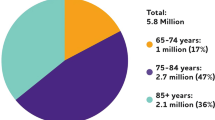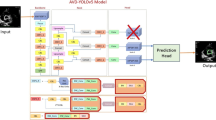Abstract
Dementia disease is globally acknowledged as one of the most severe non-communicable diseases nowadays. Identifying different stages of dementia disease is significant in its later treatment for delaying the onset and progression of the disease. Among diverse types of tools utilized in dementia disease diagnosis, brain scanning is generally accepted as an effective and affordable way at present. There are several kinds of medical images incorporated in contemporary dementia studies, and magnetic resonance images receives vast popularity. In this study, arterial spin labeling, an emerging perfusion functional-magnetic resonance imaging technique, is adopted in a newly proposed image-based immersive tool for dementia disease diagnosis. Novel pairwise ranking and learning techniques based on a new continuous and differentiable surrogated Kendall-Tau rank correlation coefficient is proposed to realize the immersive tool. Extensive experiments based on a database composed of images acquired from 350 demented patients are carried out with several popular pattern recognition diagnosis tools being compared. Their results undergo rigorous and comprehensive statistical analysis, and the superiority of the newly proposed image-based immersive tool in dementia disease diagnosis has been demonstrated.








Similar content being viewed by others
References
Asllani I, Borogovac A, Brown T (2008) Regression algorithm correcting for partial volume effects in arterial spin labeling MRI. Magn Reson Med 60:1362–1371
Brant-Zawadzki M, Gillan G, Nitz W (1992) MPRAGE: a three-dimensional, T1-weighted, qradient-echo sequence–initial experience in the brain. Radiology 182(3):769–775
Brookmeyer R, Johnson E, Ziegler-Graham K, Arrighi M (2007) Forecasting the global burden of Alzheimer’s disease. Alzheimers Dement 3(3):186–191
Burges C, Shaked T, Renshaw E, Lazier A, Deeds M, Hamilton N, Hullender G (2005) Learning to rank using gradient descent. In: International Conference on Machine Learning, pp 89–96
Chu W, Keerthi SS (2005) New approaches to support vector ordinal regression. In: International conference on machine learning, pp 145–152
Crammer K, Singer Y (2001) Pranking with ranking. Advances in neural information processing systems, pp 641–647
FMRIB Software Library (FSL) toolbox. http://fsl.fmrib.ox.ac.uk/fsl/fslwiki/
Folstein M, Folstein S, McHung P (1975) Mini-mental state: a practical method for grading the cognitive state of patients for the clinician. J Psychiatr Res 12(3):189–198
Freund Y, Iyer R, Schapire R, Singer Y (2003) An efficient boosting algorithm for combining preference. J Mach Learn Res 4:933–969
Galton C, Patterson K, Graham K, Lambon-Ralph M, Williams G, Antoun N, Sahakian B, Hodges J (2001) Differing patterns of temporal atrophy in Alzheimer’s disease and semantic dementia. Neurology 57(2):216–225
Gold G, Eniko K, Herrmann F, Canuto A, Hof P, Jean-Pierre M, Constantin B, Giannakopoulos P (2005) Cognitive consequences of thalamic, basal ganglia, and deep white matter lacunes in brain aging and dementia. Stroke 36(6):1184–1188
Harrington EF (2003) Online ranking/collaborative filtering using the perceptron algorithm. In: International conference on machine learning, pp 250–257
Herbirch R, Graepel T, Obermayer K (2000) Chapter 7 - Large margin rank boundaries for ordinal regression. Advances in large margin classifiers, pp 115–132
Individual Brain Atlases using Statistical Parametric Mapping (IBA-SPM) Software. http://www.thomaskoenig.ch/Lester/ibaspm.htm
Joachims T (2002) Optimizing search engines using clickthrough data. ACM special interest group on knowledge discovery and data mining, pp 133–142
Joachims T SVM light - An implementation of support vector machine in C . http://svmlight.joachims.org
Keerthi S (2002) Efficient tuning of SVM hyperparameters using radius/margin bound and iterative algorithms. IEEE Trans Neural Netw 13(5):1225–1229
Kendall M (1938) A new measure of rank correlation. Biometrika 30:81–93
Laakso M, Partanen K, Riekkinen P, Lehtovirta M, Helkala E, Hallikainen M, Hanninen T, Vainio P, Soininen H (1996) Hippocampal volumes in Alzheimer’s disease, Parkinson’s disease with and without dementia, and in vascular dementia an MRI study. Neurology 46(3):678–681
Mahendra B (1987) A pathography of dementia. Dementia 1:189–202
Malpass K (2012) Alzheimer disease: arterial spin-labeled MRI for diagnosis and monitoring of AD. Nat Rev Neurol 8(3):847–849
Mioshi E, Dawson K, Mitchell J, Arnold R, Hodges J (2006) The Addenbrooke’s cognitive examination revised (ACE-R): a brief cognitive test battery for dementia screening. Int J Geriatr Psychiatry 21(11):1078–1085
Musiek E, Chen Y, Korczykowski M, Saboury B, Martinez P, Reddin J, Alavi A, Kimberg D, Wolk D, Julin P, Newberg A, Arnold S, Detre J (2012) Direct comparison of fluorodeoxyglucose positron emission tomography and arterial spin labeling magnetic resonance imaging in Alzheimer’s disease. Alzheimers Dement 8(1):51–59
Partial volume imaging. http://en.wikipedia.org/wiki/Partial_volume_(imaging)
Rice J (2007) Mathematical statistics and data dnalysis, 2nd edn. Duxbury Press
Shashua A, Levin A (2002) Ranking with large margin principle: two approaches. Advances in neural information processing systems, pp 937–944
Statistical Parametric Mapping (SPM) toolbox. http://www.fil.ion.ucl.ac.uk/spm/
United Nations. World population prospects. http://www.un.org/esa/population/publications/wpp2006/WPP2006_Highlights_rev.pdf
World Health Organization. The top 10 causes of death. http://www.who.int/mediacentre/factsheets/fs310/en/index2.html
Acknowledgments
The authors would like to acknowledge Grants 61403182 and 61363046 approved by the National Natural Science Foundation of China, Grant [2014]1685 approved by the Scientific Research Foundation for Returned Overseas Chinese Scholars, Ministry of Education, China, as well as the 2015 Provincial Young Scientist Program 20153BCB23029 approved by the Jiangxi Provincial Department of Science and Technology, China.
Author information
Authors and Affiliations
Corresponding author
Rights and permissions
About this article
Cite this article
Huang, W., Zeng, S., Li, J. et al. A new image-based immersive tool for dementia diagnosis using pairwise ranking and learning. Multimed Tools Appl 75, 5359–5376 (2016). https://doi.org/10.1007/s11042-015-2826-8
Received:
Revised:
Accepted:
Published:
Issue Date:
DOI: https://doi.org/10.1007/s11042-015-2826-8




